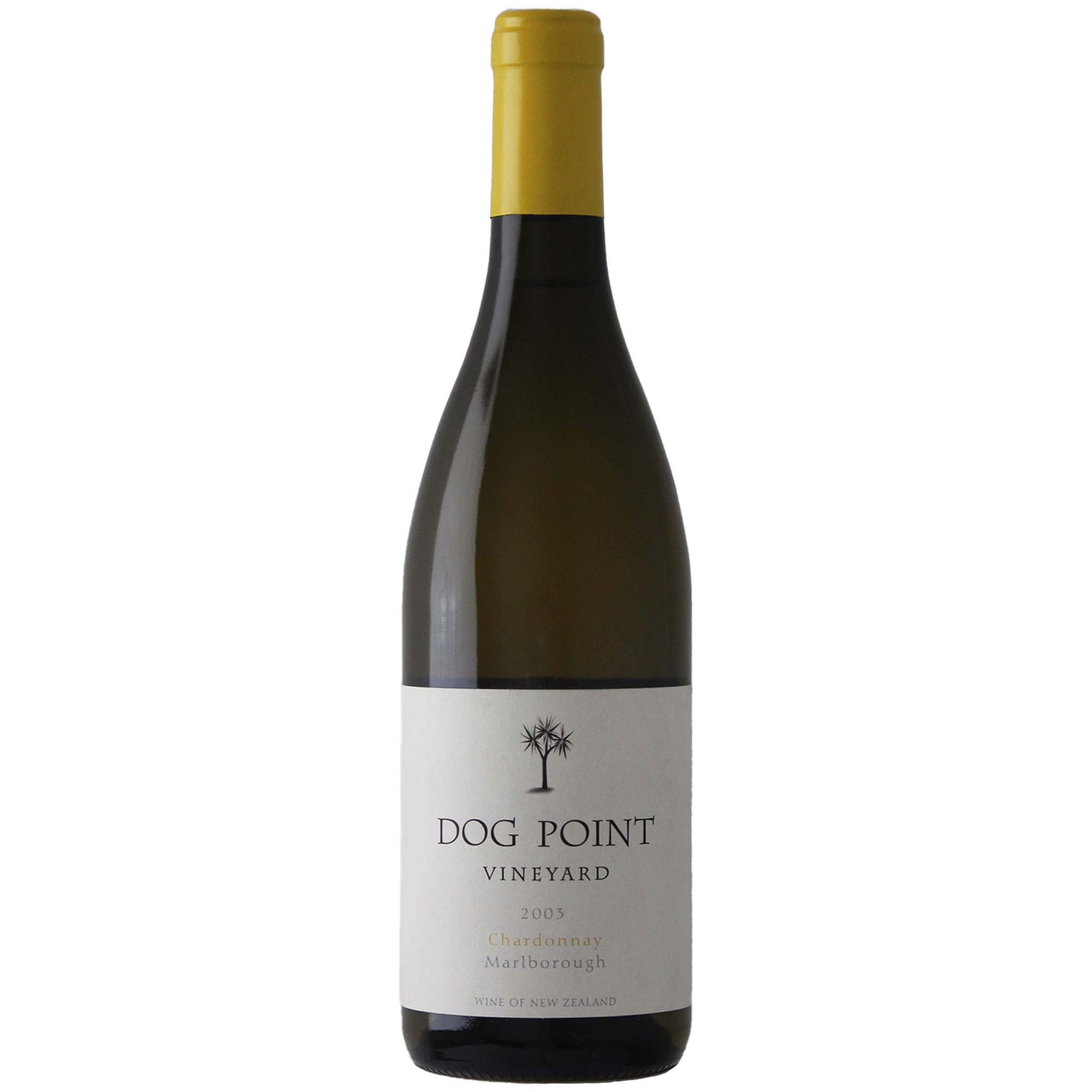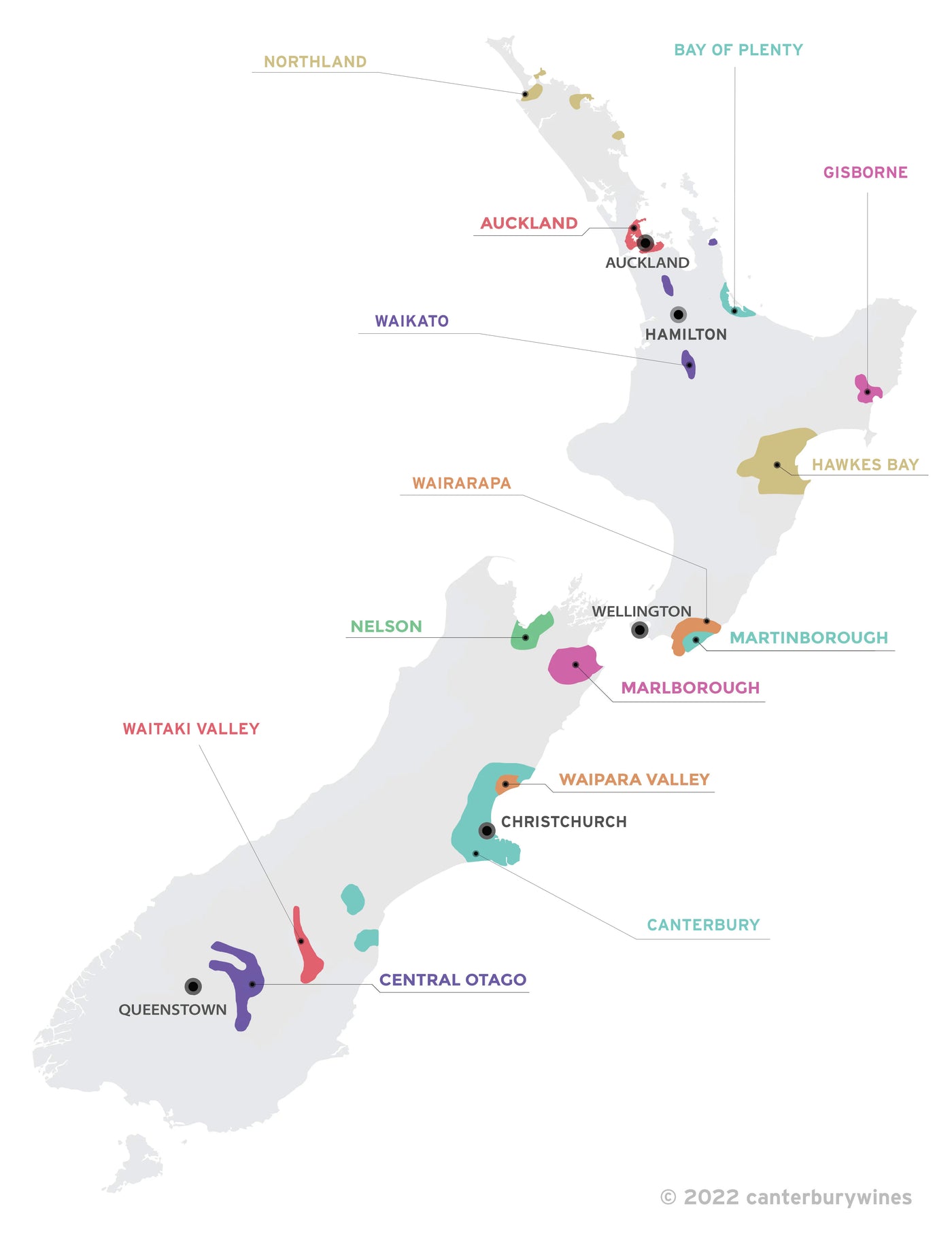
Dog Point Chardonnay 2003
Style: White Wine
Closure: Cork
Dog Point Chardonnay 2003
Warehouse
34 Redland Drive
Vermont VIC 3133
Australia
Producer: Dog Point
Country: New Zealand
Region: Marlborough
Vintage: 2003
Critic Score: Not Rated
Alcohol: 13.5%
Size: 750 ml
Drink by: Now
Ivan and Margaret Sutherland planted the Dog Point Vineyard back in the late 1970s, making it one of the oldest privately owned vineyards in Marlborough. Ivan Sutherland met James Healy in the 1990s when they worked together at Cloudy Bay, Ivan in viticulture and James in winemaking. In 2002 Ivan and James decided to leave Cloudy Bay to start their own label and they launched Dog Point in 2004 using fruit from the 2002 vintage.
The 2003 Dog Point Chardonnay is the second vintage under the Dog Point label and the last one made at the Cloudy Bay winery.
"A sensational white more in the mould of a good Chablis than anything I have tasted from Marlborough bearing the word chardonnay. Made with handpicked grapes treated to full indigenous yeast fermentation, 100 per cent malolactic fermentation and loads of lees stirring. Taste fresh, citrusy and is seductively mouth-filling." Joelle Thomson
"Straw colour; strong aromas of grapefruit and roasted hazelnut with savoury characters from extended contact with yeast lees; full bodied expression of the variety integrating fresh grapefruit with chalky textural lees character." Dog Point
Dog Point (click on image to play video)
Expert reviews
"A sensational white more in the mould of a good Chablis than anything I have tasted from Marlborough bearing the word chardonnay. Made with handpicked grapes treated to full indigenous yeast fermentation, 100 per cent malolactic fermentation and loads of lees stirring. Taste fresh, citrusy and is seductively mouth-filling." Joelle Thomson, Viva
"The chardonnay was barrel fermented with wild yeast and has a deliciously tangy wine with a dash of toasty oak, the flavours of grapefruit and lemon, and a dry intense aftertaste." Tim Harris, New Zealand Herald
"The 2003 Dog Point Vineyards Chardonnay is one of the best New Zealand chardonnays I have tasted. It is remarkable that it comes from Marlborough, a region usually renowned for chardonnays with over-the-top acids and pronounced buttery tastes. This chardonnay flouts that busty cleavage style, sporting a far more subtle and European style. It is a chardonnay for those who are supposedly overdrinking the stuff." Joelle Thomson, Viva
About the winery

James Healy and Ivan Sutherland (left and right)
Ivan and Margaret Sutherland planted the Dog Point Vineyard back in the late 1970s, making it one of the oldest privately owned vineyards in Marlborough. The vineyard is centrally located at the confluence of the smaller Brancott and Omaka Valleys, on the hill slopes of the Southern Valleys (refer to the map below). It is a very desirable area for grape growing and is neighbour to the first commercially planted vineyard in Marlborough, planted in 1973 by Montana.
Ivan Sutherland met James Healy in the 1990s when they worked together at Cloudy Bay, Ivan in viticulture and James in winemaking. This was during the time when Cloudy Bay put quality Marlborough wine (particularly Sauvignon Blanc) on the map. In 2002 Ivan and James decided to leave Cloudy Bay to start their own label, with Ivan providing the fruit and James making the wine in one of those classic wine partnerships. They launched the Dog Point label in 2004 using fruit from the 2002 vintage. It came as no surprise to anyone that Dog Point hit the ground running and produced, and continues to produce, wines of the highest quality.
The property is planted to Sauvignon Blanc, Chardonnay and Pinot Noir grown under organic principles. Fruit for the wines is sourced from the older well-established vines planted back in the late 1970s and supplemented with fruit from newer closely planted hillside vines. The Sauvignon Blanc vines are on average 25 years old, the oldest being well over 30 years of age. The Section 94 vines that go into the single vineyard, barrel fermented Sauvignon Blanc are 30 years old. The average vine age for the Chardonnay is 30 years old, with the oldest vines being 40 years old. The Pinot Noir vines date back to the early 1980s, making some of them around 40 years old.

Dog Point vineyard and Marlborough sub-regions

New Zealand
New Zealand is home to more than 700 wineries across 14 wine regions. The regions are Auckland, Bay of Plenty, Canterbury, Central Otago, Gisborne, Hawkes Bay, Marlborough, Martinborough*, Nelson, Northland, Waikato, Waipara Valley, Wairarapa and Waitaki Valley. * Martinborough is a sub-region of Wairarapa, however, as it is world renowned it is considered here to be a region to avoid confusion.
The wine regions in New Zealand stretch from latitudes 36°S (Northland) in the north (comparable in latitude to Jerez, Spain), to 45°S (Central Otago) in the south (comparable in latitude to Bordeaux, France). New Zealand's climate is maritime, producing cooler summers and milder winters than would be expected at similar latitudes in Europe.
Viticulture in New Zealand dates back to 1836 when British resident James Busby produced wine in the far north, but it wasn't until 1985 that the wine industry came of age when Cloudy Bay Sauvignon Blanc garnered international attention and critical acclaim.
New Zealand is internationally renowned for Sauvignon Blanc (particularly from Marlborough), Pinot Noir (Central Otago, Martinborough and Waipara Valley), Chardonnay, Bordeaux-style blends of mainly Merlot and Cabernet Sauvignon (Hawkes Bay) and Syrah (Hawkes Bay). Sauvignon Blanc accounts for 63% of the area of the national vineyard, followed by Pinot Noir (14%), Chardonnay (8%), Pinot Gris (7%) and Merlot (3%).

